There are an estimated 4,200 religions in the world and each of these religions have their unique traditions, rituals, and celebrations which they observe. From Hajj in the holy city of Mecca to Holi in India, here are the 10 most attended religious gatherings in the world.
1. Kumbh Mela, India
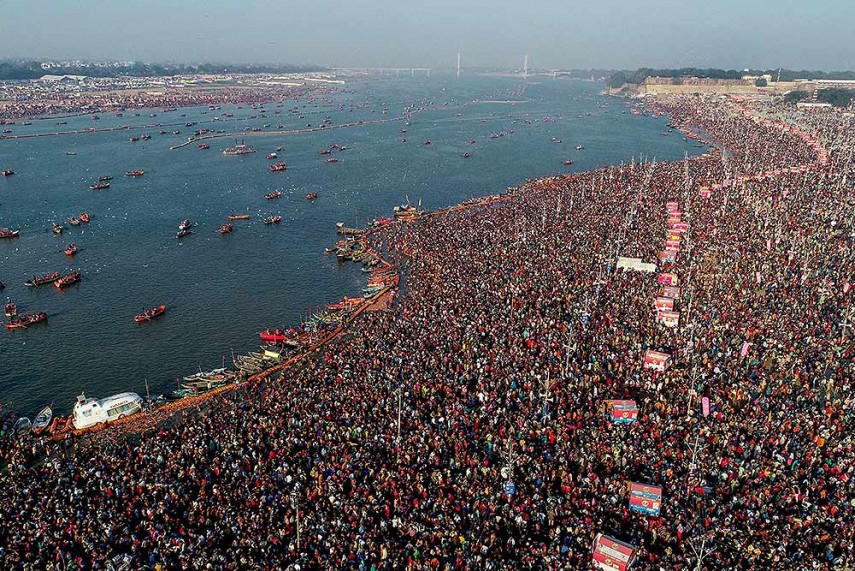
Kumbh Mela is a major pilgrimage and festival in Hinduism. It is celebrated in a cycle of approximately 12 years when Jupiter, the Sun, and the Moon are in specific positions over the 4 pilgrimage sites: the Allahabad, Haridwar, Nashik, and Ujjain. The festival is marked by a ritual dip in the waters, but it is also a celebration of community commerce with numerous fairs, education, religious discourses by saints, mass feedings of monks or the poor, and entertainment spectacle.The seekers believe that bathing in these rivers is a means to prāyaścitta (atonement, penance) for past mistakes, and that it cleanses them of their sins. The last Great Kumbh Mela gathering took place in 2001, and saw an estimated 60 million Hindu devotees attend.
2. Arba’een Pilgrimage, Iraq
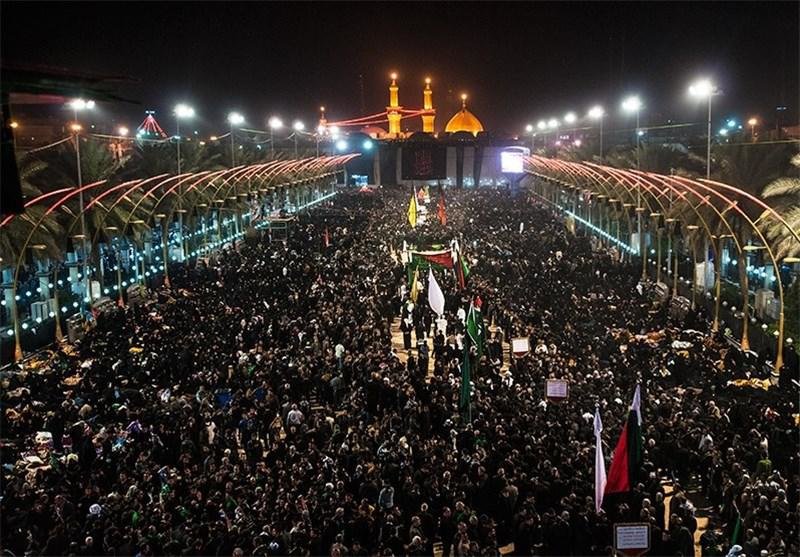
The Arba’een Pilgrimage is the world’s largest annual public gathering, held in Karbala, Iraq at the end of the 40-day mourning period following Ashura, the religious ritual for the commemoration of martyrdom of the grandson of Prophet Mohammad and the third Shia Muslim Imam, Husayn ibn Ali’s in 680. Anticipating Arba’een, or the fortieth day of the martyrdom, the pilgrims make their journey to Karbala on foot, where Husayn and his companions were martyred and beheaded by the army of Yazid I in the Battle of Karbala.On the routes of the pilgrimage, food, accommodation and other services are provided for free by volunteers. The gathering sees an average attendance of 30 million people.
3. Black Nazarene, Philippines
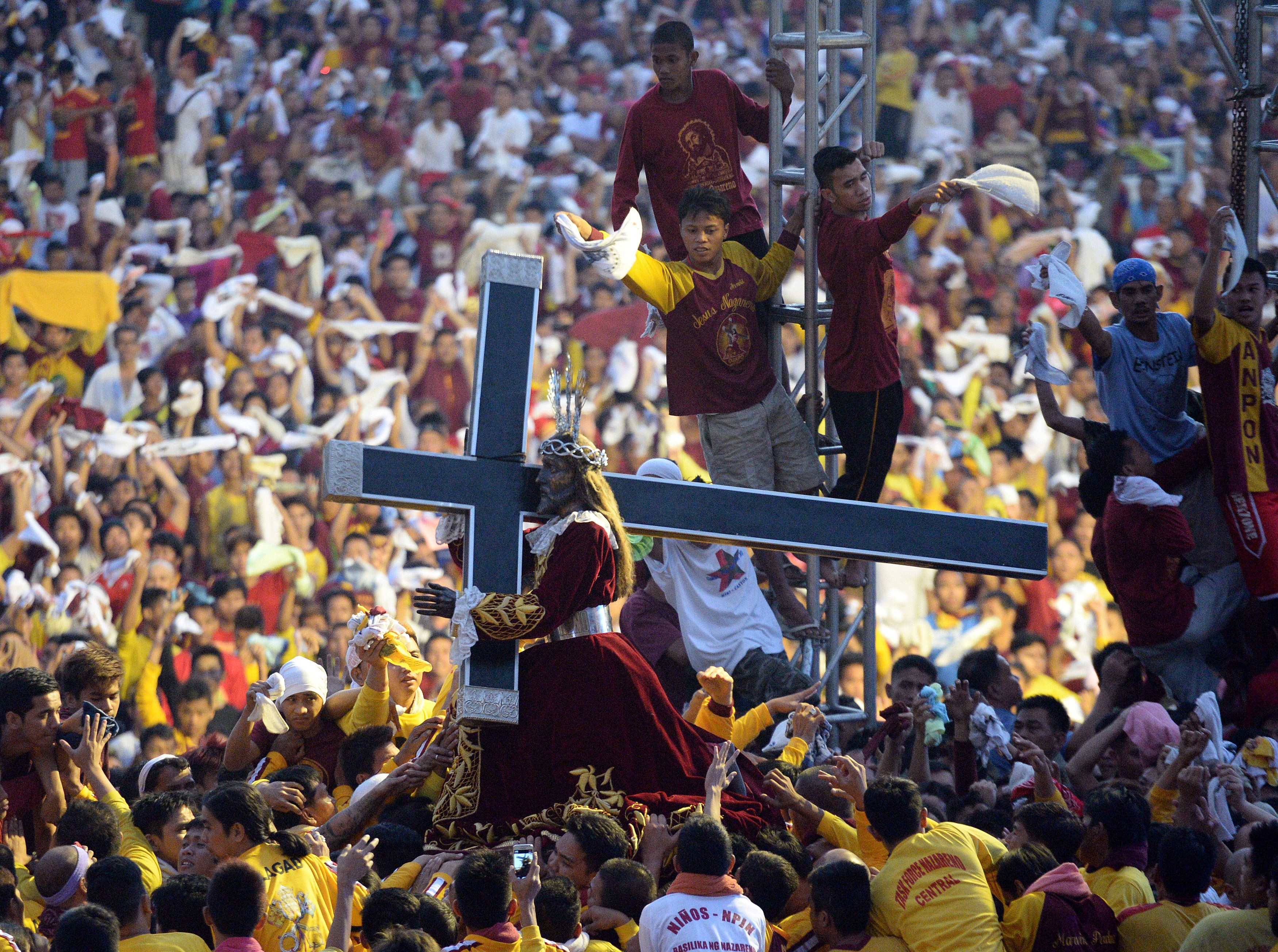
The feast of the Black Nazarene is a day-long festival in Quiapo Manila held every 9th of January where thousands of devotees from all walks of life come to the church of Quiapo to take part in the procession around the statue of Black Nazarene, as a way of strengthening their faith or fulfilling their “panata” (vow) to Lord. The statue is a life-size replica of Christ that was brought to Manila by a Spanish priest in 1606m and it is believed that since then, miraculous things have been reported to those who touch the image. During the procession, throw towels to the police who guard the statue and ask them to rub the towel on the statue in hopes of receiving some power from the statue. Over 3 million people joined the procession in 2020.
4. Hajj, Saudi Arabia
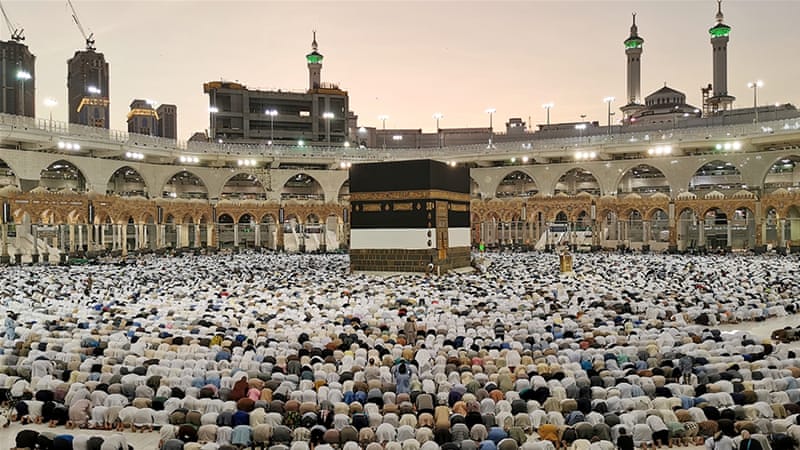
The Hajj is an annual Islamic pilgrimage made to the Kaaba, the “House of Allah”, in the sacred city of Mecca in Saudi Arabia, the holiest city for Muslims. It is a mandatory religious duty for Muslims that must be carried out at least once in their lifetime by all adult Muslims who are physically and financially capable of undertaking the journey, and can support their family during their absence. The rites of Hajj are performed over five or six days, beginning on the eighth and ending on the thirteenth day of Dhu al-Hijjah, the last month of the Islamic calendar. It is one of the Five Pillars of Islam, alongside Shahadah, Salat, Zakat and Sawm. The pilgrimage occurs from the 8th to 12th (or in some cases 13th) of Dhu al-Hijjah, the last month of the Islamic calendar. 2019 Hajj saw just over 2.4 million pilgrims, but attendance is known to reach 3 million sometimes.
5. Attukal Pongala, India

Attukal Pongala is a 10-day festival celebrated at the Attukal Temple, Thiruvananthapuram, Kerala, India, during which there is a huge gathering of millions of women on the ninth day. The women prepare a divine food made of rice in earthen pots and offer it to the Goddess of the Temple. The festival is marked as the largest annual gathering of women by the Guinness World Records. In 2009, a new Guinness World Records celebrated 2.5 million attendance.
6. Bishwa Ijtema, Bangladesh

The Bishwa Ijtema is an annual gathering of Muslims in Tongi, by the banks of the River Turag, in the outskirts of Dhaka, Bangladesh. It is one of the largest peaceful gatherings in the world. During the gathering, attending devotees perform daily prayers while listening to scholars reciting and explaining verses from the Quran. During the final prayer, devotees raise their hands to pray for world peace.
7. Makarajyothi Festival
Makaravilakku is an annual festival held on Makar Sankranti in Kerala, India at the shrine of Sabarimala. The festival includes the Thiruvabharanam (sacred ornaments of Lord Ayyappan) procession and a congregation at the hill shrine of Sabarimala. An estimated half a million devotees flow to Sabarimala every year to have a darshan (vision) of this ritual this day.
8. Holi, India

Holi is an ancient Hindu festival, originating from the Indian subcontinent and also celebrated across other areas of Asia and parts of the Western world. The festival signifies the victory of good over evil. It signifies the arrival of spring, the end of winter, the blossoming of love, and for many a festive day to meet others, play and laugh, forget and forgive, and repair broken relationships. The festival also celebrates the beginning of a good spring harvest season. It lasts for a night and a day, starting on the evening of the Purnima (Full Moon day) falling in the Vikram Samvat Calendar, in the Hindu calendar month of Phalguna, which falls around middle of March in the Gregorian calendar.
9. Ouidah Voodoo Festival, Benin
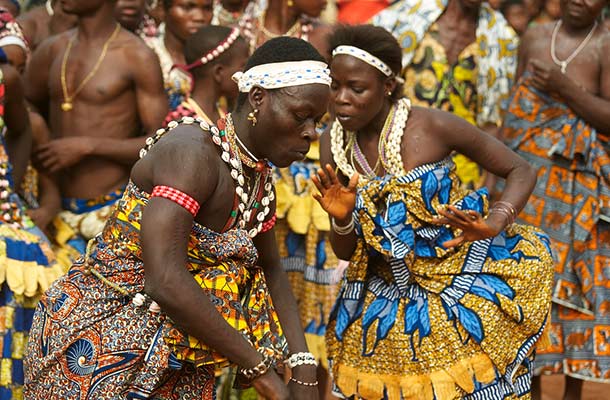
The annual festival takes place near the Temple of Pythons Ouidah on the big beach on the Atlantic Ocean, where there is also the Door of No Return. The festival is held to remember the millions of people killed during the slavetrade era. The festival is attended by over 10,000 people from both Africa and other parts of the world like Brazil and Haiti.
10. Māgha Pūjā, Thailand

Māgha Pūjā is the third most important Buddhist festival, celebrated on the full moon day of the third lunar month in Cambodia, Laos, Thailand, Sri Lanka and on the full moon day of Tabaung in Myanmar. The festival celebrates a gathering that was held between the Buddha and 1,250. During the festival, thousands of Buddhist Monks who attend the festival, pray and worship and to cleanse their minds.


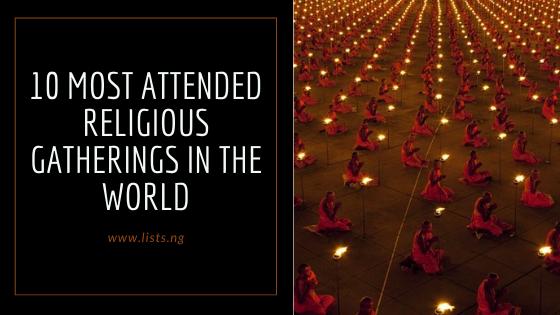




What of Uganda catholic pilgrimage at Namugomgo every 3TD June